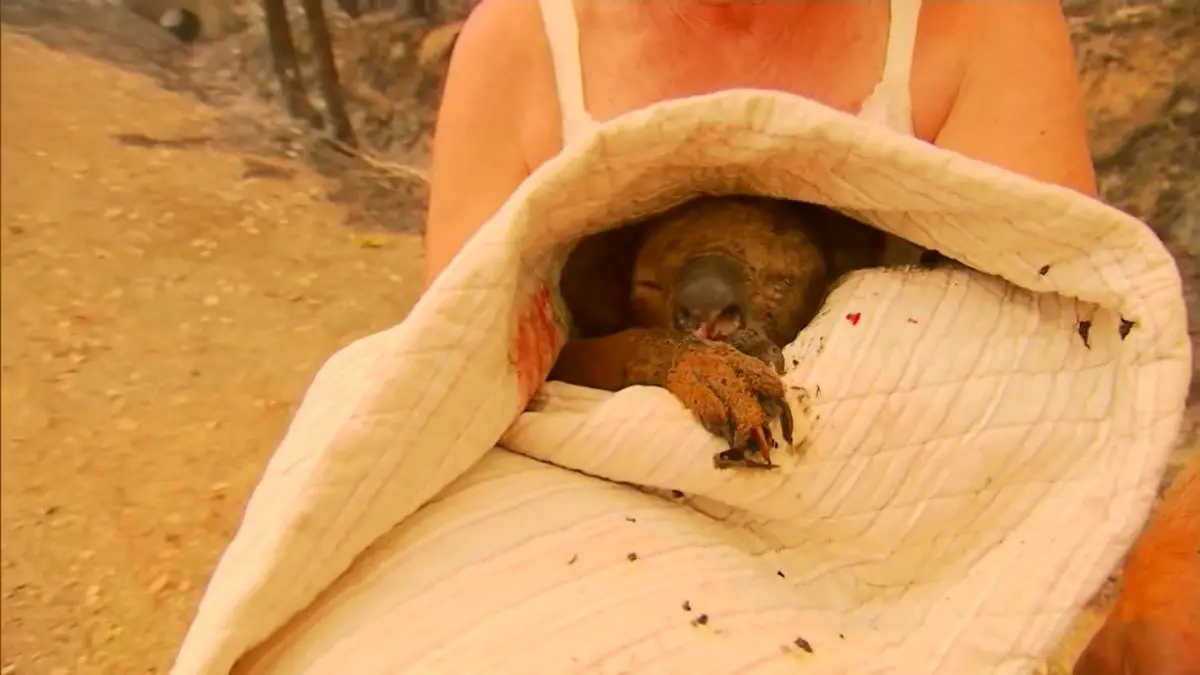New South Wales Koalas Could Be Entirely Wiped Out In Australian Bush Fires

Bushfires that are currently tearing through New South Wales, Australia have wiped out half of the region’s remaining endangered Koala population. On a coastal reserve that was home to the area’s remaining koalas, at least 350 members of the species were wiped out in the fires, which is more than half of the 500-600 that remained in New South Wales before the fires, according to Koala Conservation Australia.
The actual numbers at this point are likely far worse than the estimations, which were reported earlier this month when the bushfire season in the area began early in NSW. At the time there were only 15 major blazes in the region, but a report this week indicated that the number has reached 55, putting the remaining koalas at extreme risk.
Amanda Gordon, one of the workers who cares for the animals at the reserve, says that it is hard to tell at first glance if the animals are suffering from any health problems, and says that it could take up to ten days of observation to tell whether or not something is wrong.
This woman rescued a koala caught in Australia's bushfires – a hero. pic.twitter.com/S9rOSZdUHN
— Al Jazeera English (@AJEnglish) November 21, 2019
“We look for signals of pain – teeth grinding, distress – and we just take it on a day-by-day basis. Sometimes koalas seem to be doing really, really well. Their paws might be healing up but if something’s going on that we can’t see there’s not really much we can do,” added Ms Gordon, who has worked at the hospital for 15 years.
Across the whole continent of Australia, the total number of koalas is estimated to be anywhere from 50,000 to 100,000.
James Tremain of the Nature Conservation Council of New South Wales, says that koalas are in danger of becoming extinct within our lifetime.
🐨
Remember the woman that rescued the Koala from the bushfires?
Here is a follow up video, where the koala is receiving treatment and a reunion with his lady rescuer.
Thank you @ShaunaChapmanUK for sharing this. #bushfires #koala #Australiahttps://t.co/Q4wgiOKcF1
— Alexander Verbeek 🌍 (@Alex_Verbeek) November 21, 2019
“Koalas are definitely in trouble in New South Wales, but if the declines continue at the same rate as the last 20 to 30 years, koalas could be extinct in the wild by mid-century,” Tremain said.
Tremain was referencing a report published last year by WWF Australia and the Nature Conservation Council (NCC). The report used satellite images of NSW to show how koala habitats were under threat from land clearing. The report found that the rate of land cleared in the region nearly tripled, from 2,845 hectares to 8,194 hectares between 2017 and 2018.
Meet Kate. She was saved by rescuer Darrel from Bellangry State Forest, NSW east. Kate suffers from extensive burns to her entire body. She is the lucky few. Kate arrived dehydrated & sore but is in the best care at Koala Hospital. Great team effort from donors, volunteers etc ❤ pic.twitter.com/SVyWLjaiTo
— Miz One Earth 🥄🌏 (@MizOneEarth) November 14, 2019
According to the rate of deforestation shown in the satellite imagery, experts predicted that koalas would be wiped out from the region by 2050, but with these unprecedented fires are making this a much more immediate concern. It is possible that the last remaining koalas in the region could be lost in this year’s fires.
Over 5000 people have downloaded our free ebook “Growth Hacking Tips And Rituals For Optimal Living” CLICK HERE to get your free copy now
Deborah Tabart OAM, chairman of the Australian Koala Foundation, estimates that over 1000 koalas in Australia have been killed in the last two months from deforestation and bushfires.
“Even if an animal survives the fire, then they’ll starve to death,” she said, adding that the animals were “functionally extinct” in the region.
“Functionally extinct means that a koala living today might have one joey and that joey may or may not have a joey, if they don’t, that’s functionally extinct. We think there’s no more than 16-18,000 koalas in the whole of NSW … so to lose a population of that size in a stronghold is disastrous,” Tabart said, according to AU News.
Leave Comment: